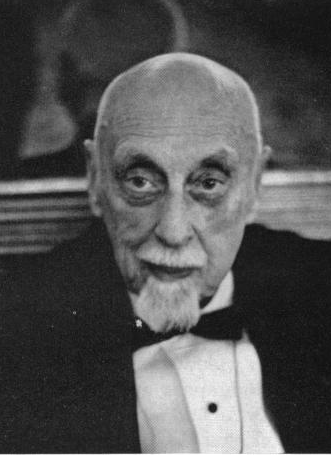
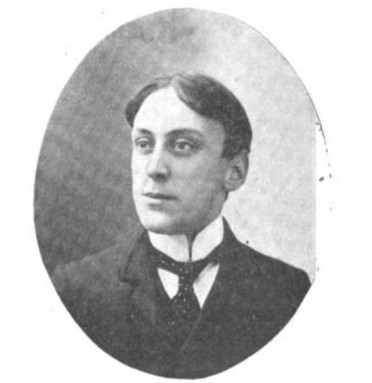
One of my favorite things to do while walking through various neighborhoods with my mother is to look for cats in windows, on porches, on the sidewalk, or in the grass. Sometimes I take photos of the cats to keep track of them, especially on days when all the neighborhood felines are making themselves visible. I guess one could say I’m a modern-day Ralph Irving Lloyd.
Dr. Ralph Irving Lloyd was an eye doctor who also had an eye for cats. Lloyd created dozens of lantern slides of cats in his Park Slope neighborhood, where he lived for a good chunk of his 93 years of life.
Born in Poughkeepsie, New York, in 1875, Lloyd moved to New York City after high school to begin his medical studies with Dr. Charles E. Lane. From 1893 to 1896, he attended the New York Homeopathic Medical College and Hospital, graduating with honors as Class Valedictorian.

Dr. Lloyd completed his training at the New York Ophthalmic Hospital, and by 1899, he was operating his own private practice in Brooklyn.
In 1905, Dr. Lloyd married Nettie Hesson Limberg. Shortly thereafter, he began taking photographs of Park Slope cats on fences, roofs, and window ledges. Perhaps, just a thought, he was taking walks with his wife, who may have pointed out these cats to him.
Following additional medical studies in Europe in 1926, Dr. Lloyd went on to become a professor at the New York Homeopathic Medical College and Hospital. He also wrote and lectured on ophthalmology (he published 40 papers), and was a founding member of the Brooklyn Ophthalmological Society. His contributions to the field were extensive.
In 1910, a year that Dr. Lloyd took several cat photos, he and Nettie were living at 450 Ninth Street in Park Slope, about a dozen blocks from the Washington Baseball Grounds, where the Brooklyn Dodgers got their start in 1883. But for most of his adult life, Dr. Lloyd lived in a brownstone house at 14 Eighth Avenue in Park Slope, only one block from the Grand Army Plaza at Prospect Park.
About five years after the death of his first wife in 1937, the doctor married Carrie Orr Fleming. He retired in 1959 and focused much of his spare time on the New York Times crossword puzzle and photographing local historic homes and other buildings in Brooklyn, Queens, and Manhattan.

Dr. Lloyd died in Brooklyn on May 9, 1969, and was buried alongside his parents, two brothers, and first wife at Poughkeepsie Rural Cemetery .
At the end of this historical portion of the cat tale, I have posted a few more cats of Park Slope from the Brooklyn Visual Heritage collection. I wonder if any of these cats ever appeared in any of my cat stories of Old Brooklyn?
A Brief History of 14 Eighth Avenue
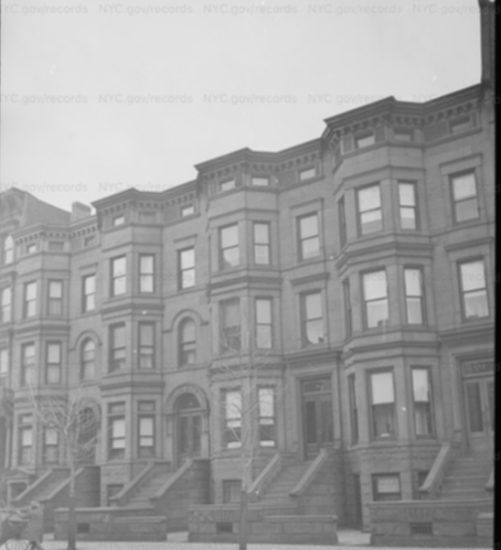
Prior to the late 19th century, only a few families, including the Hoyts, Cortelyous, and Pooles, owned large farms in what is now called Park Slope, Brooklyn. Toward the end of this century, Eighth Avenue and Prospect Park West competed for the grandest of freestanding mansions and most prestigious of residents.
The four-story and basement Romanesque Revival brownstone at 14 Eighth Avenue where Dr. Lloyd lived was built in 1890 by owner-builder William Gubbins, who also built No. 12 and No. 16 (Gubbins later resided in No. 16).
The brownstones at No. 8-10 were constructed a year later by Brooklyn architect John Mumford. Prior to this time, the lot was occupied by a large frame building, as noted in the 1884 map below.
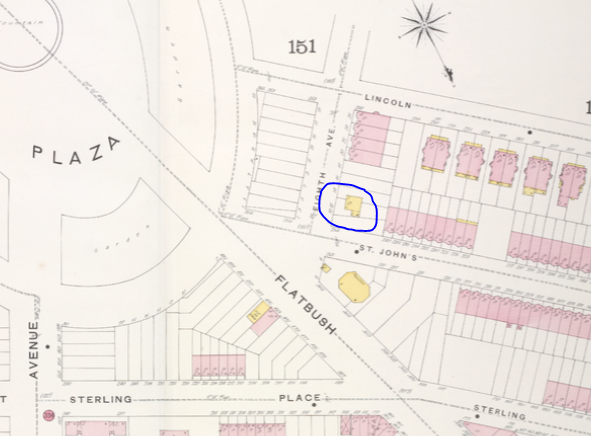
The west side of Eighth Avenue between St. John’s and Lincoln Place (No. 8-26) was called Sportsmen’s Row because several of its residents, including brothers Phillip and Michael Dwyer (who owned the corner houses), James Rowe, and popular jockey Jimmie McLoughlin, were all rich and famous horsemen.
The homes were also across from the Montauk Club, a gentlemen’s club founded in 1889. The clubhouse at 25 Eighth Avenue was designed by renowned New York architect Francis H. Kimball and completed in 1891.
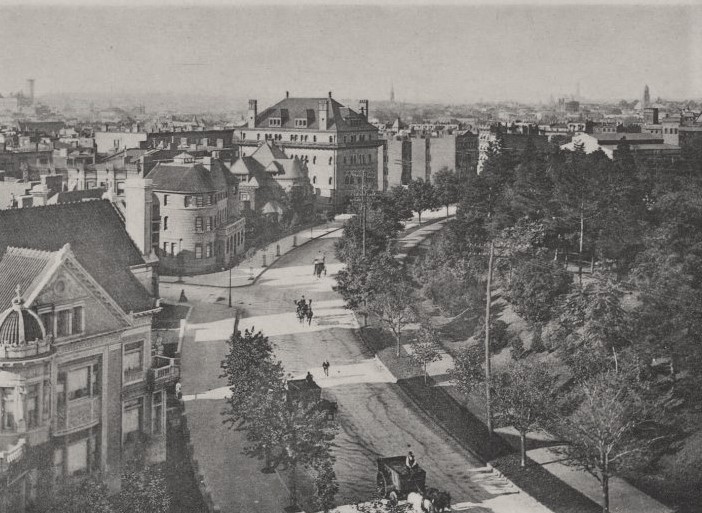
The Montauk Club was rather progressive in that, unlike similar organizations of that time, membership was open to Jews as well as both Democrats and Republicans. If you had money and power, you could join the club.
The Montauk Club also allowed women, although it was not necessarily progressive when it came to females: Kimball designed a ladies’ entrance to the left of the main entrance, which led to a staircase that only women used to access a set of elegant rooms just for them. In these special rooms, the wives of the club members could hold luncheons, teas, bridal showers, and other events without ever interacting with the men.
When Sportsmen’s Row was first built, residents, who paid up to $25,000 or more for their homes, had a clear view of the Grand Army Plaza. The row was on the highest point of Park Slope and considered one of the most desirable of residential homes in all of Brooklyn.
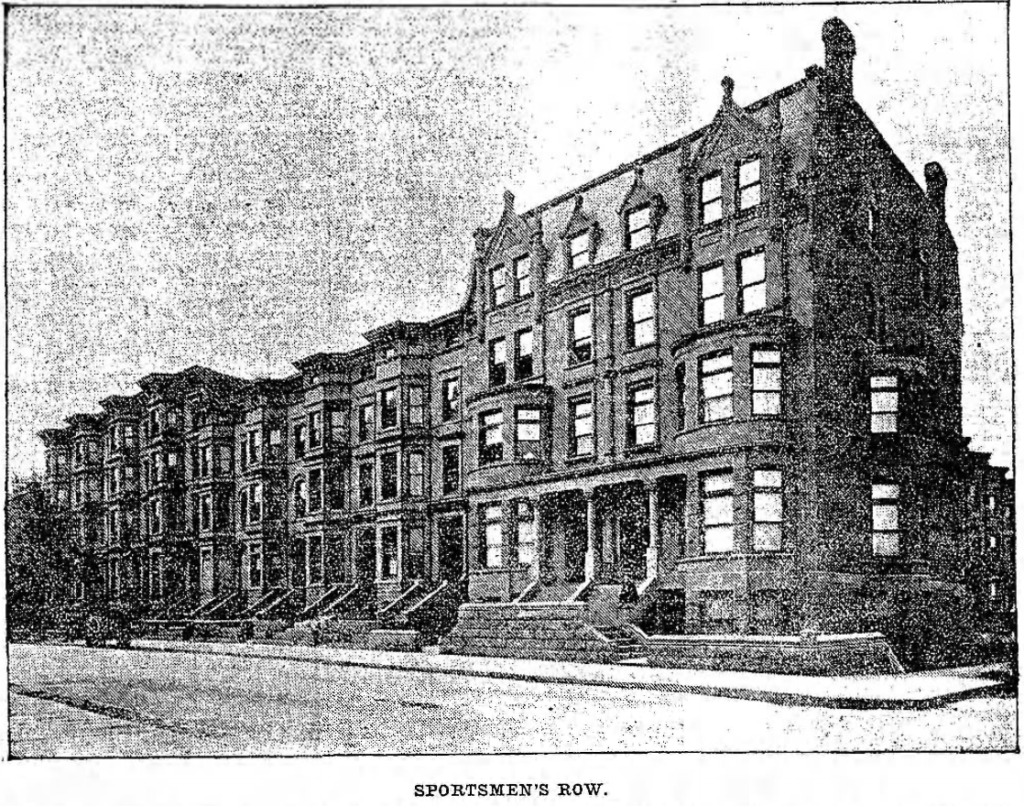
But then in 1896, Charles G. Peterson, who owned the vacant lot on the east side of the street, caused a ruckus by proposing to erect a row of four houses fronting Plaza Street.
The Brooklyn Standard Union reported, “As Mr. Peterson owns flush up to the street, he can have a back board fence, with doors and bells for the butcher, the baker, the grocer, etc., or he can leave it all open, with a skeleton fence around it, exhibiting all of the domesticity common to the rears of houses, all of which makes the people of Sportsmen Row shudder when they think of it.”
Residents–almost all them members of the Montauk Club–tried to raise enough money to pay Peterson off, but the trustees of the Montauk Club refused to help out. Little by little, the original residents began canceling their Montauk Club memberships and moving out. In 1900, George J. Brown, a dry goods merchant who lived at 14 8th Avenue, killed himself with a gun in his front parlor on the second floor.
After Peterson’s white, stone-front homes were completed in 1901, not only was the view of the Grand Army Plaza completely obstructed, but the new residents of Sportsmen Row now looked out onto the backyards of the new houses. Some of the locals began calling this new row of houses “Spite Row.”
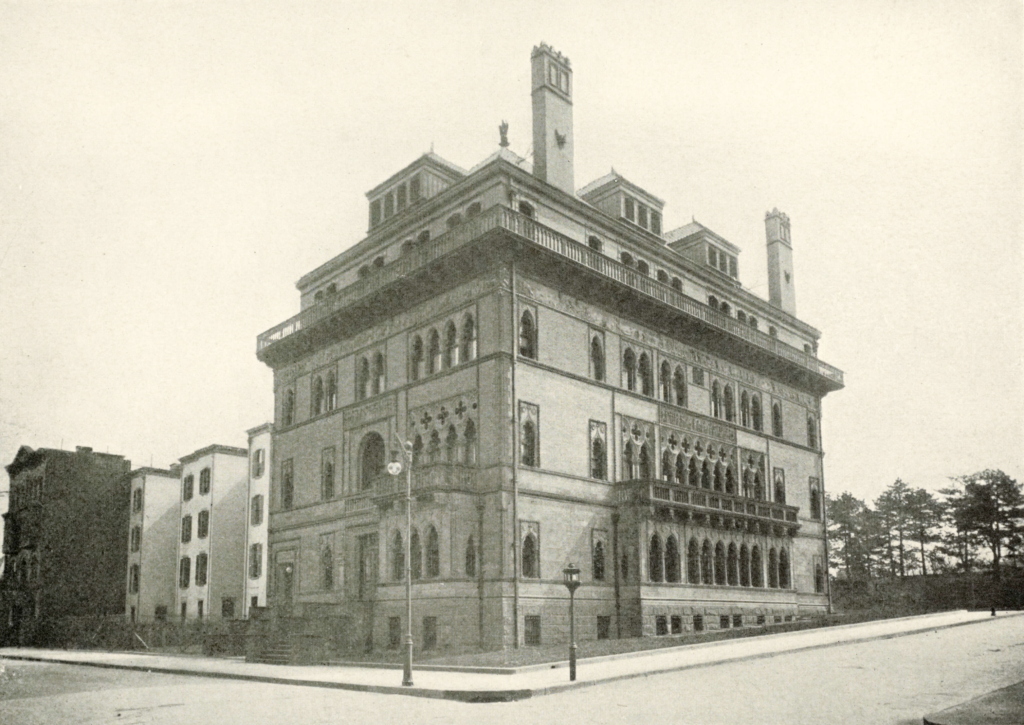
The Thomas Poole Farm

Sportsmen Row was once part of the Thomas Poole farm, a pie-shaped parcel bounded by the old road to Gowanus (established in 1704) and the Grand Army Plaza and Prospect Park West between St. Johns Place and President Street.
Poole was a farmer, milkman, and owner of a small grocery and tavern. He had purchased this land from Thomas Baisley, who once owned a large farm on what was known as Battle Hill (now Prospect Park).
Poole owned a considerable amount of property along the road to Gowanus. He resided in a low, one-story house on the west side of the street between present-day Dean and Bergen Streets. The home was still standing in 1869, when it was occupied by a milkman named Van Houten.
Speaking of milkmen, here are a few more milk-loving felines from the collection of Dr. Ralph Irving Lloyd. I don’t think any of these cats had the luxury of living in Sportsmen Row.



